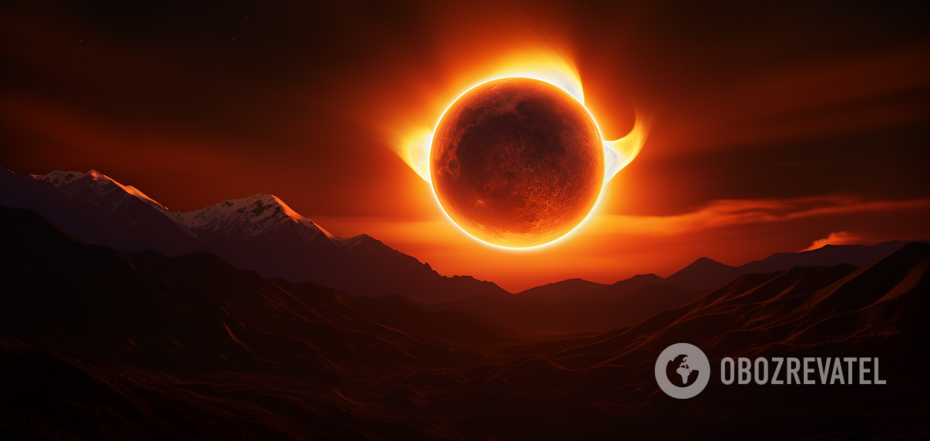News
No more total solar eclipses in the future: what's the reason
This Saturday, October 14, the world will witness an extraordinarily beautiful but rare phenomenon called an annular solar eclipse. The new Moon will be located between the Sun and the Earth in such a way that a ring of fire will form around it for several minutes. Astronomers say that in the future, this type of eclipse, along with partial eclipses, will be visible to earthlings, but there will be no more total eclipses.
Space.com asked experts to explain why this change will occur. The reason is the peculiarities of the Moon's orbit, which changes over time.
What will the world see on October 14?
During this week's solar eclipse, the Moon will be as close as possible to its apogee, the point in its orbit farthest from Earth. The distance to it is just over 397,000 km. As a result, the shadow of the object will be too small to cover the entire visible disk of the Sun. A ring of 4.8% of the original area of this disk will form around the shadowed Moon. Only North and South America will be able to see the beauty of this phenomenon - in Ukraine, it will be possible to watch it only online.
Astronomers will observe the phenomenon with particular interest, because it is fundamentally different from a total solar eclipse. Some of the typical accompanying phenomena do not occur. For example, the illusion of twilight in the middle of the day does not appear - even such a small fraction of sunlight is enough to illuminate the Earth.
What will change in the future?
Astronomers are already warning that over time, the phenomenon of a total solar eclipse will become impossible. The reason for this is the gradual movement of the Moon away from the Earth. At some point, it will simply become visually too small to completely block the solar disk.
Now the Earth's natural satellite is moving around our planet in an elliptical orbit. At its perigee (the closest point to us), it is 356,371 km away, and at its apogee (the most distant), it is 406,720 km away. The average distance from the Earth to the Moon is 384,748 km.
For a total eclipse to occur, the Moon's dark shadow cone must collide with the Earth's surface. Usually, the diameter of this cone is 130 km. At any point of this shadow, you can observe a total solar eclipse - the dark Moon completely covers the Sun. The length of the shadow cone is 378,000 km, which, as you can easily see, is less than the average distance of the Moon from the Earth.
That's why, when the new moon passes directly between the Earth and the Sun, the distance to the Moon is now sometimes more than 378,000 km. Although the satellite can still approach our planet at a shorter distance, it is increasing slightly each time.
This was established because from July 1969 to December 1972, twelve Apollo astronauts left several laser reflectors on the lunar surface. Scientists use them to measure the distance to the celestial body. They direct a laser beam at such a reflector and, based on the time it takes to reach the satellite's surface and return, determine exactly how many kilometers separate us at that moment. The analysis of these measurements showed that the average distance from the Moon to the Earth is increasing at a rate of about 3.8 cm per year.
Why is the Moon moving away from us?
The Moon's motion is strongly influenced by the Sun's gravity. And the gravity of the Earth and other planets has a slightly lesser impact. Due to tidal forces, the natural satellite gradually stretches its orbit away from us. Of course, this also affects its apparent size - the nighttime luminary is getting smaller and smaller. Eventually, it will reach a point where its dark shadow cone will no longer be able to reach the Earth. Total eclipses of the Sun will then cease.
Currently, mathematical calculations show that this will happen in the period from 620 million to 1.21 billion years. It is impossible to be more precise, because the movement of space objects relative to each other is also not constant and gradually increases. If the distance continues to grow at the same rate as now, total solar eclipses will be observed on Earth for another 1.21 billion years.
Earlier, OBOZREVATEL reported that scientists have noticed signs of a slowdown in the evolution of the universe, which contradicts existing mathematical models.
Subscribe to OBOZREVATEL's Telegram and Viber channels to stay up to date with the latest developments.



























